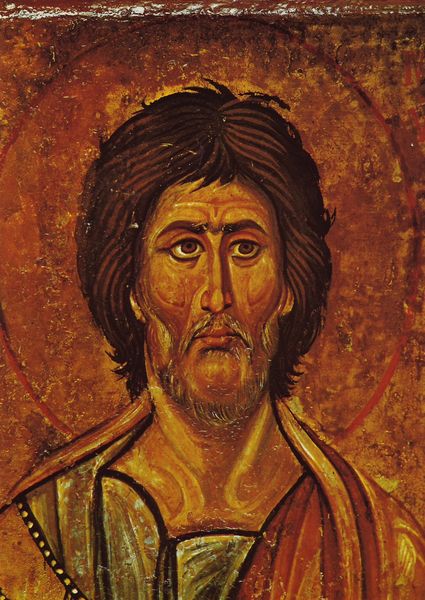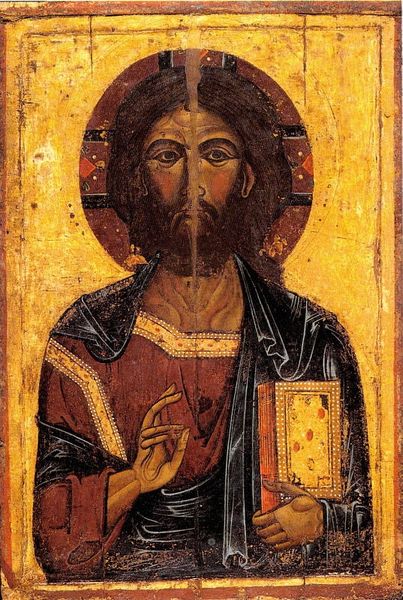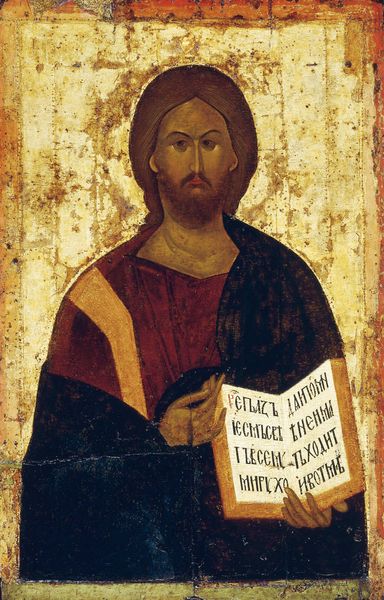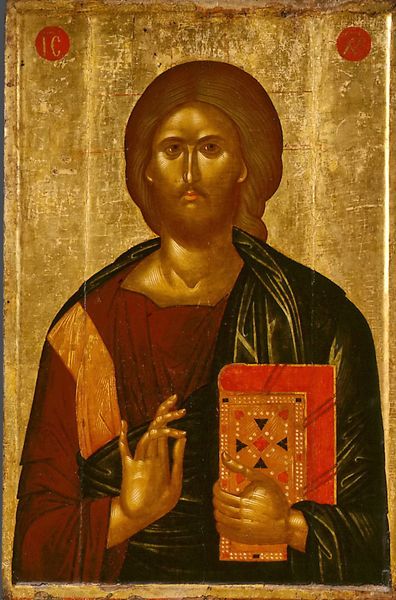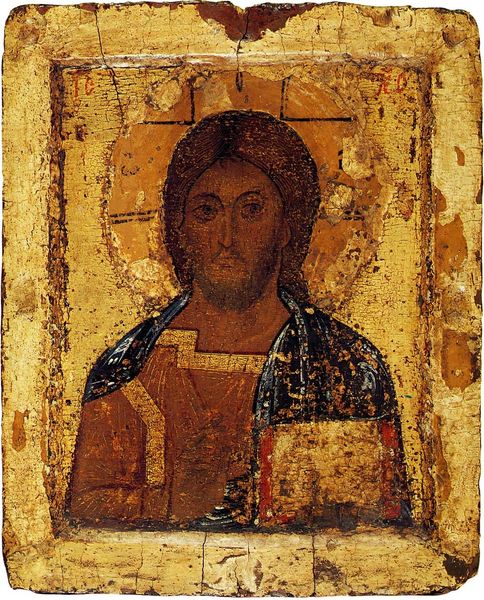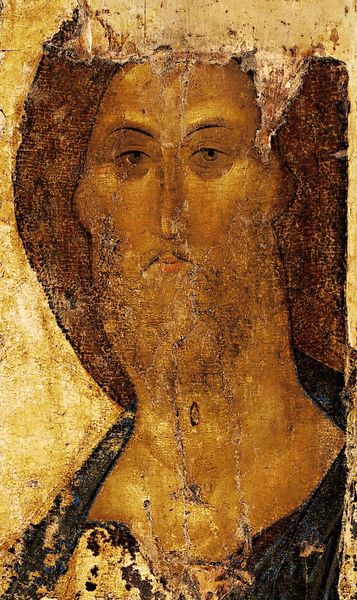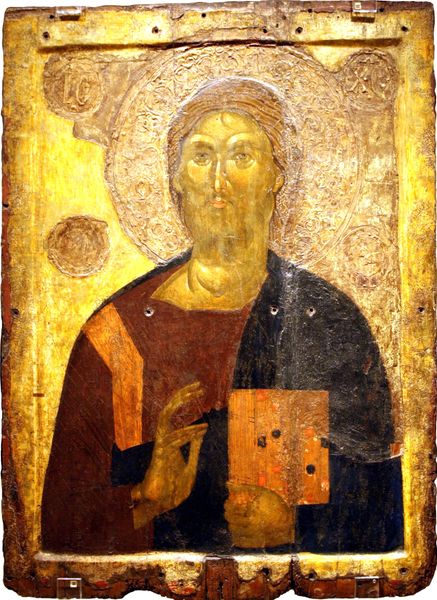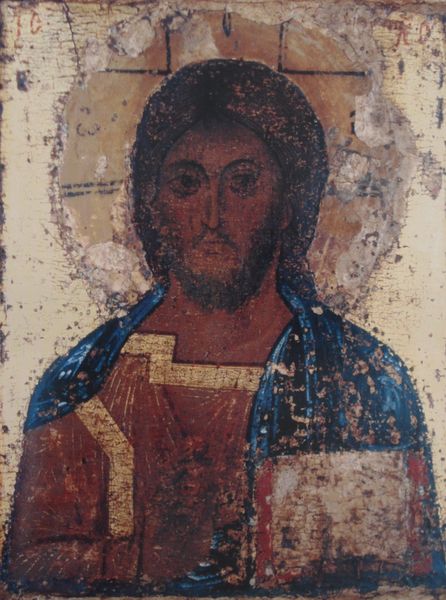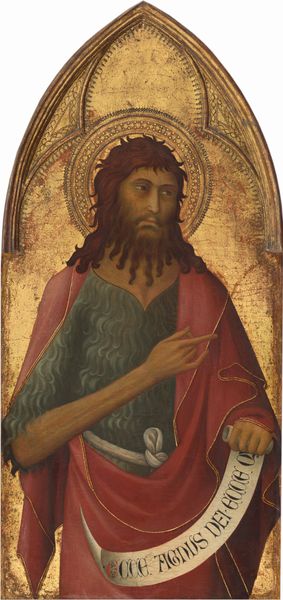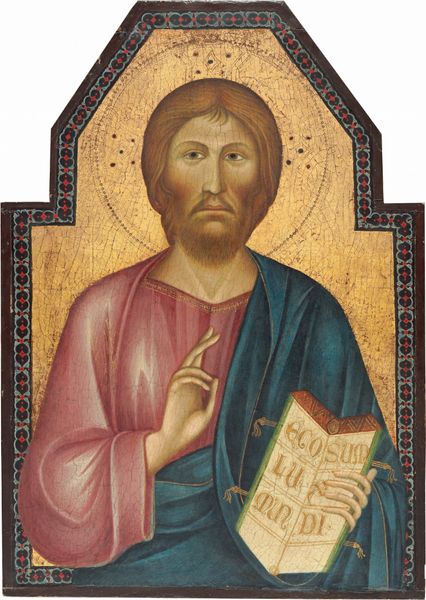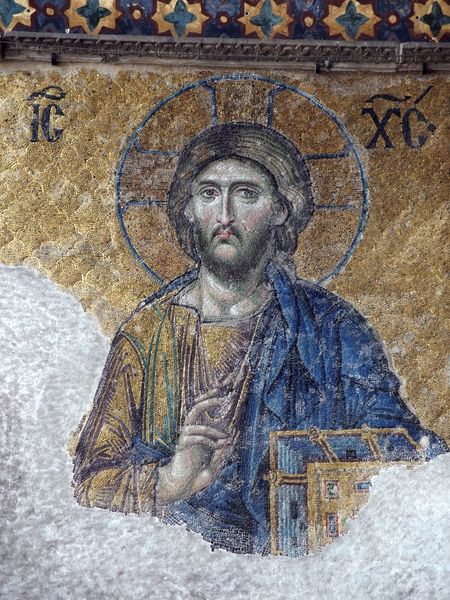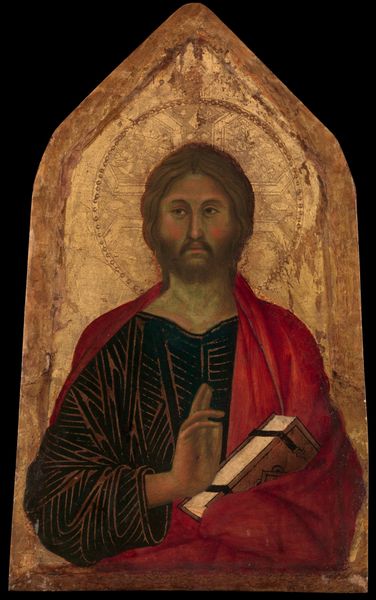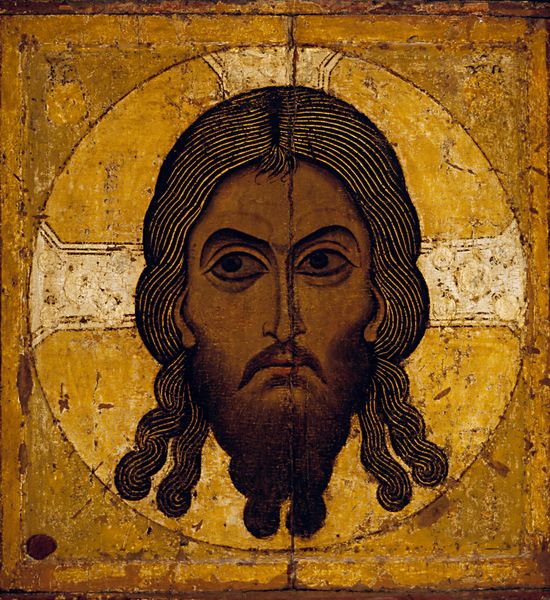
tempera
#
portrait
#
byzantine-art
#
tempera
#
oil painting
Copyright: Orthodox Icons,Fair Use
Curator: This tempera on panel icon is titled "Christ Pantokrator," dating back to 1265. It's currently housed in the Hilandar Monastery on Mount Athos, Greece. Editor: The very first impression that I receive from this artwork is one of incredible stillness, almost solemn. The limited color palette and flatness create an intense, internal focus. Curator: Absolutely. Consider the historical and social role this icon played. It's more than a picture; it's an embodiment of Christ's authority as the "ruler of all.” How would its original viewers have interacted with this image politically, spiritually? The male-centered worldview reflected in this image asks: How might later audiences of different genders and orientations reinterpret this representation? Editor: It also comes down to the work of creation itself. Tempera, made of pigment and egg yolk, ground by hand… The monastic life devoted to such careful and spiritual work; this materially intensive process suggests profound levels of labor and care that cannot be separated from the artwork’s meaning. Curator: And the way that Byzantine art situates itself politically is crucial. As the image radiates authority and knowledge it speaks to cultural capital and divine status—both of which work through societal power dynamics. Consider its reception over time. Editor: Yet, the humanity of the piece keeps the image grounded in materiality. Even the cracks, signs of age and use, demonstrate the value of these items over the centuries, emphasizing material durability, the physical properties of paint and wood, as tangible, precious things that we hold and value. Curator: Thinking through those levels of tangible interactions, allows us to reimagine the cultural conversations from which the image arose and where they travel, and transform into new contemporary meanings. Editor: For me, the weight of those choices is important. The tangible reality connects to a kind of sensory knowledge. In what tactile spaces did people gather to discuss and encounter the works in relation to the other forms of community and meaning-making they may have known. Curator: Yes! Thank you for taking a look at the intersections of society, materials, power and spiritual significance in "Christ Pantokrator". Editor: Absolutely, bringing us closer to how art has historically and continues to shape human existence through material practices and our cultural landscape.
Comments
No comments
Be the first to comment and join the conversation on the ultimate creative platform.
